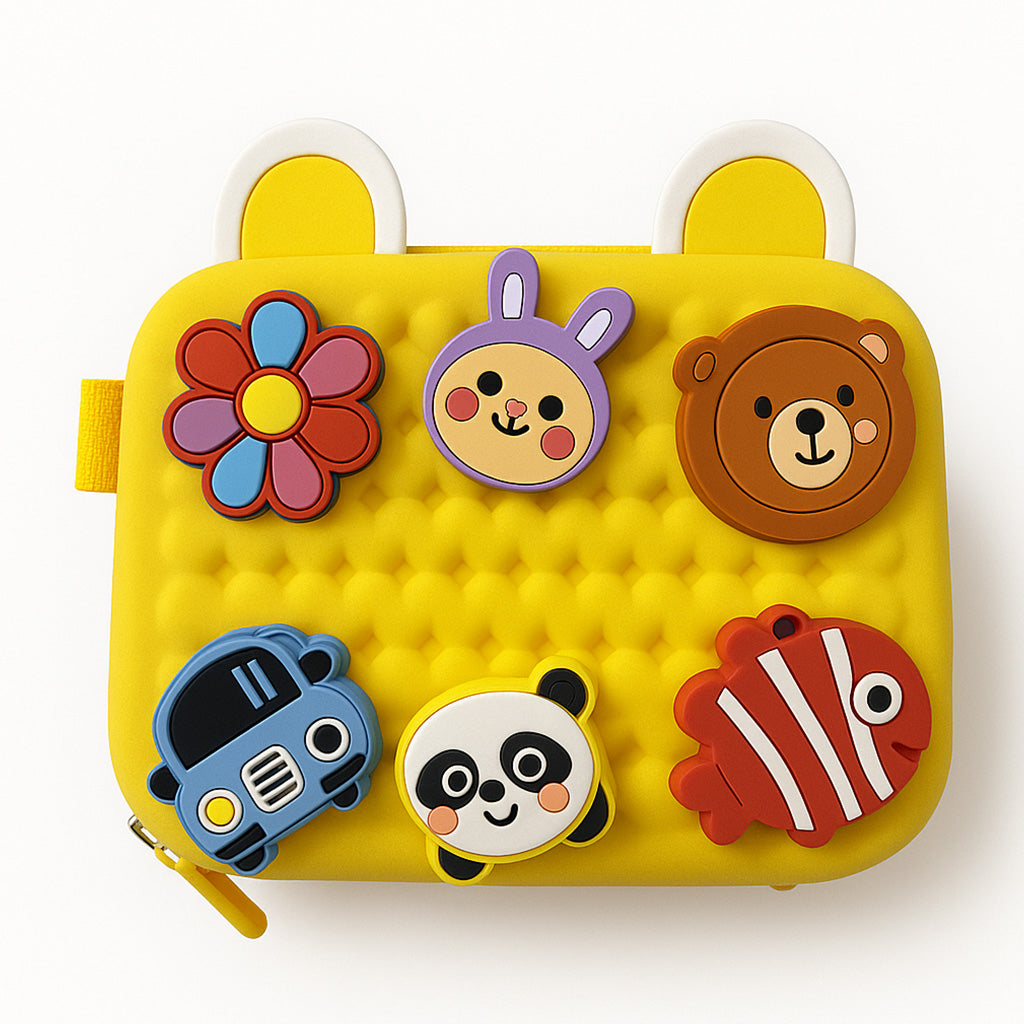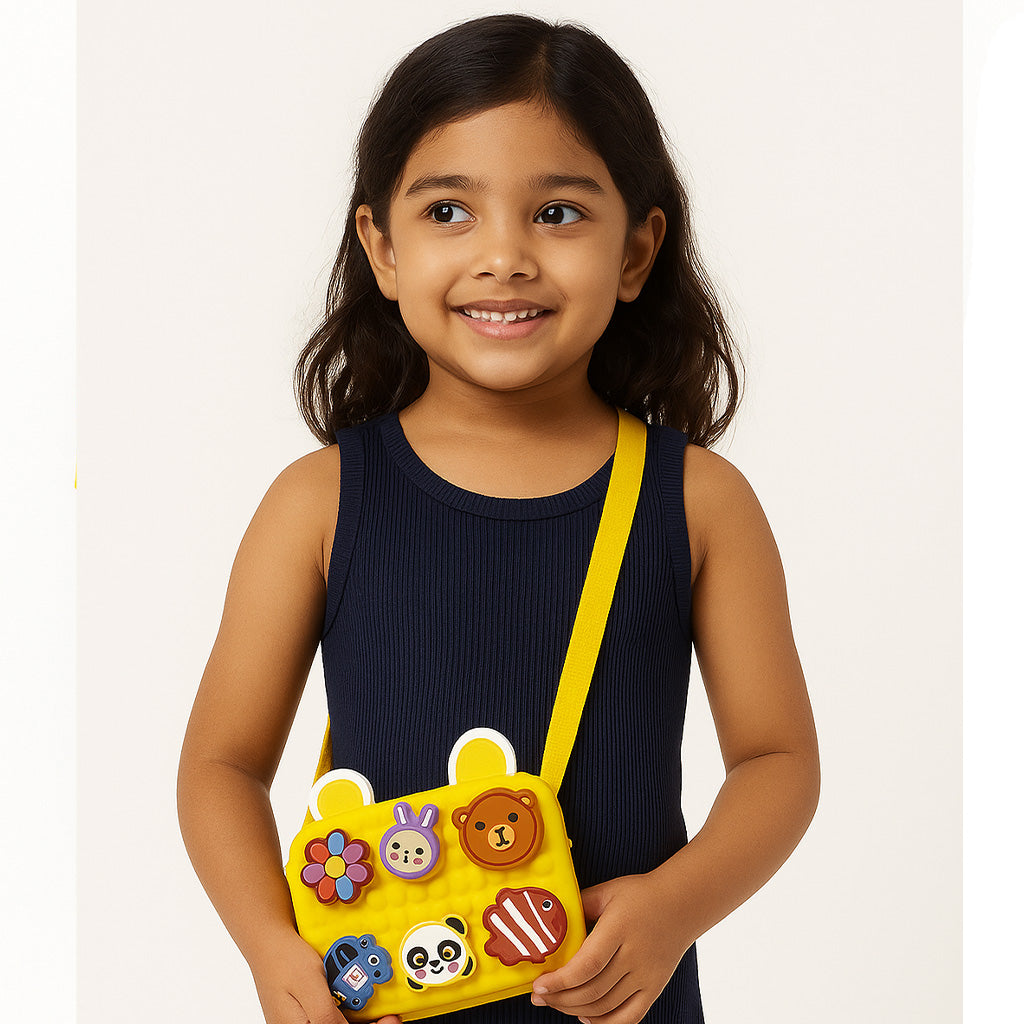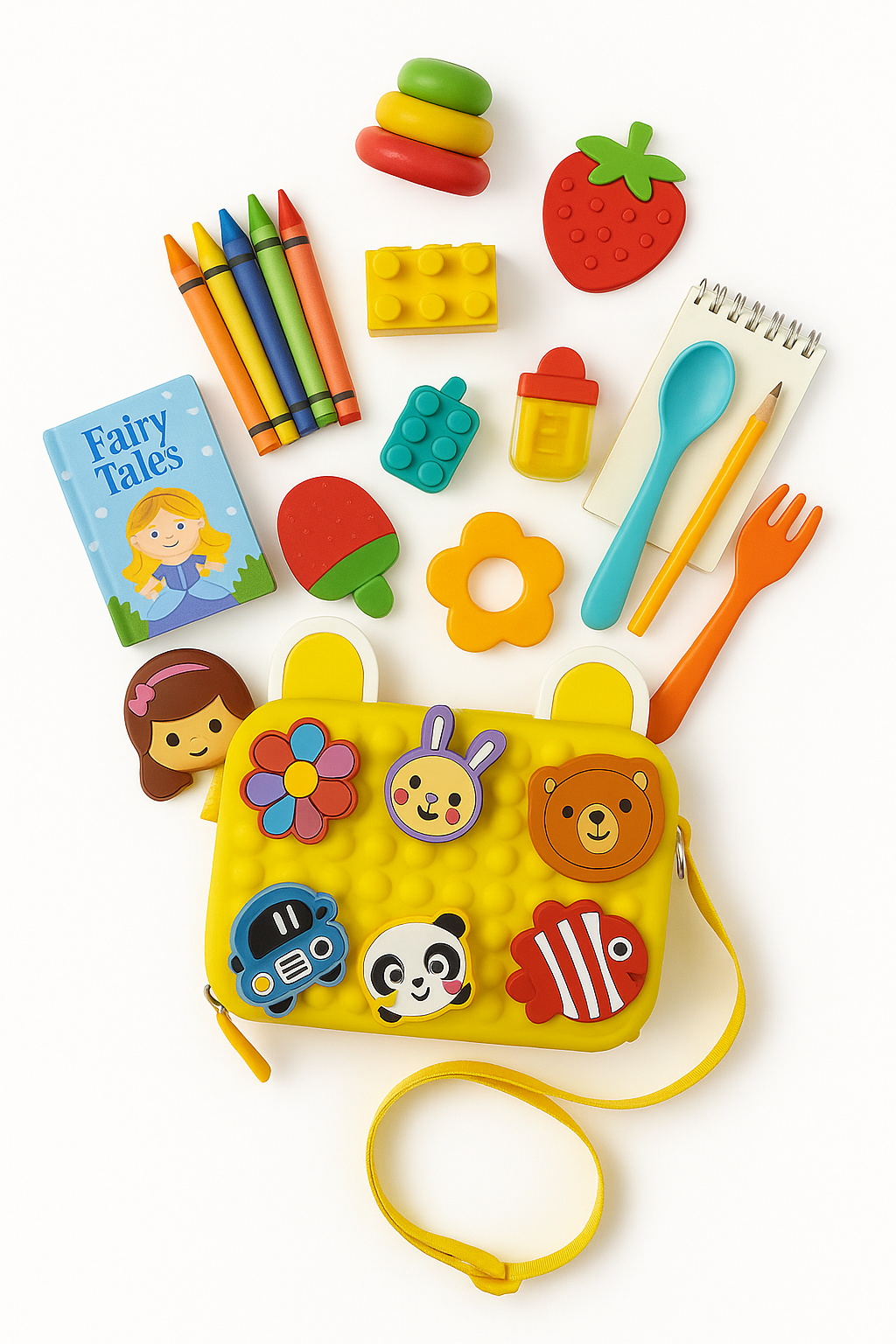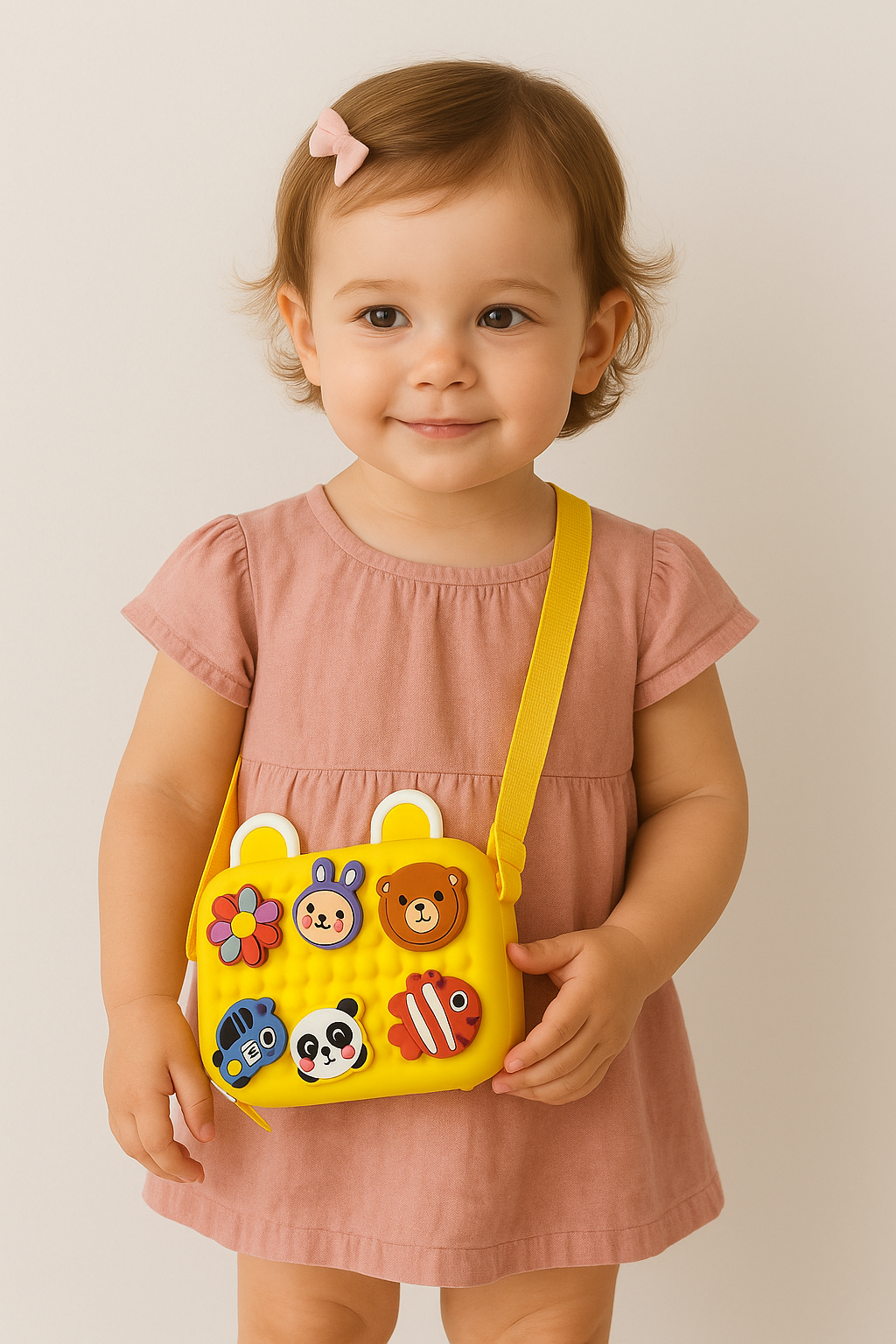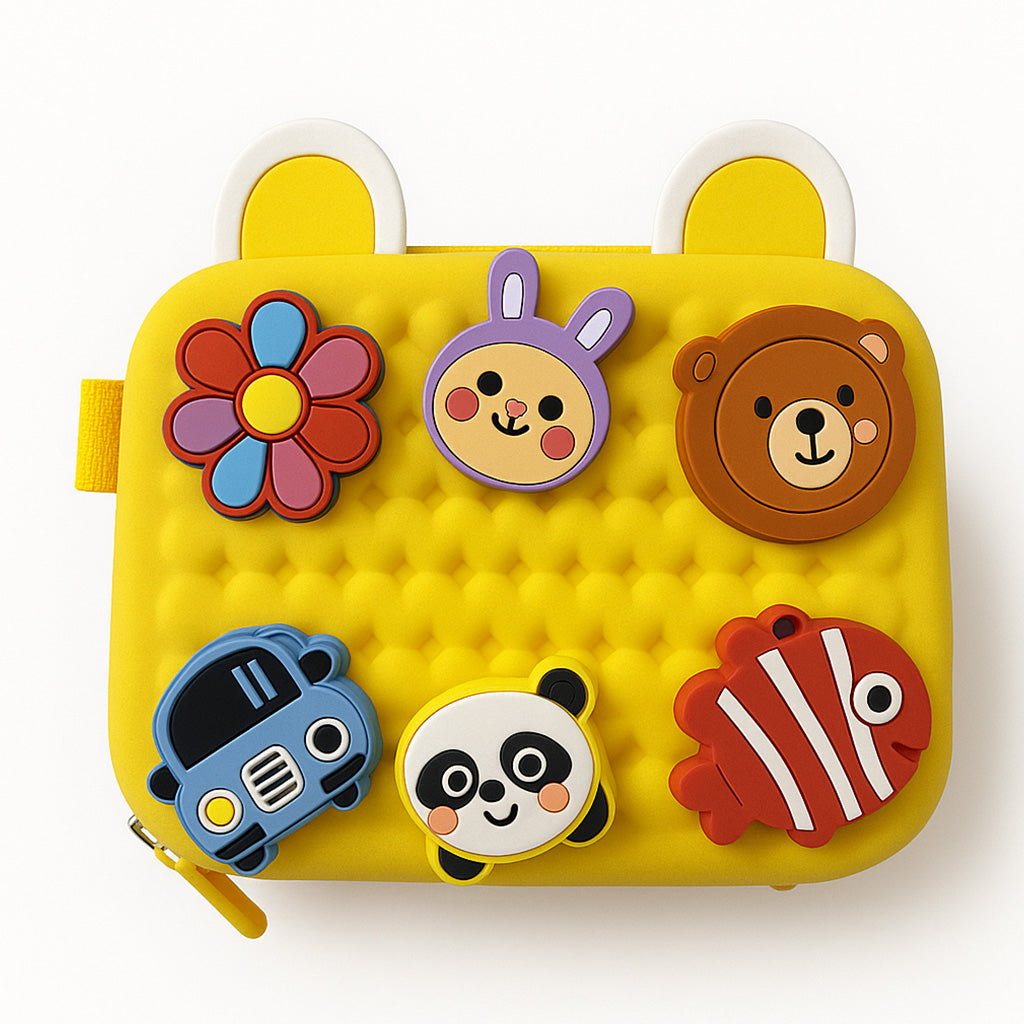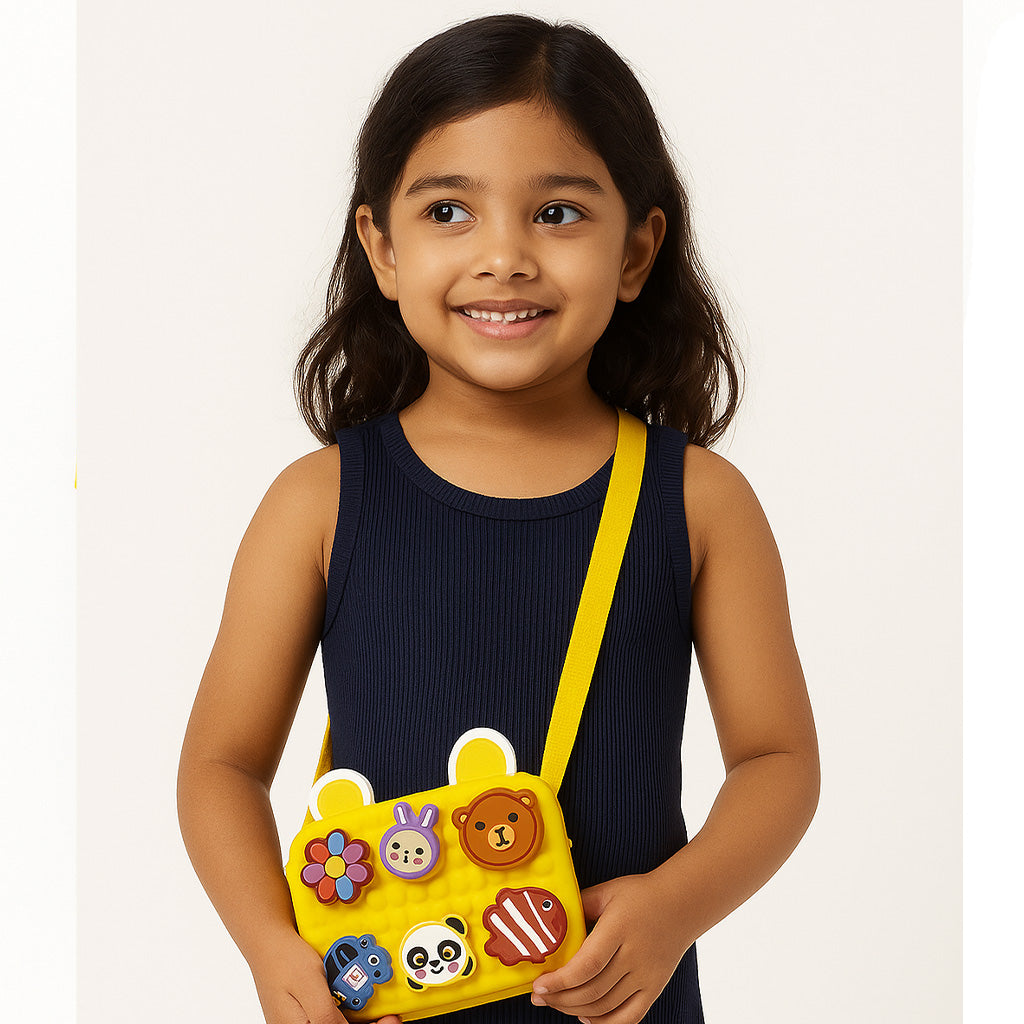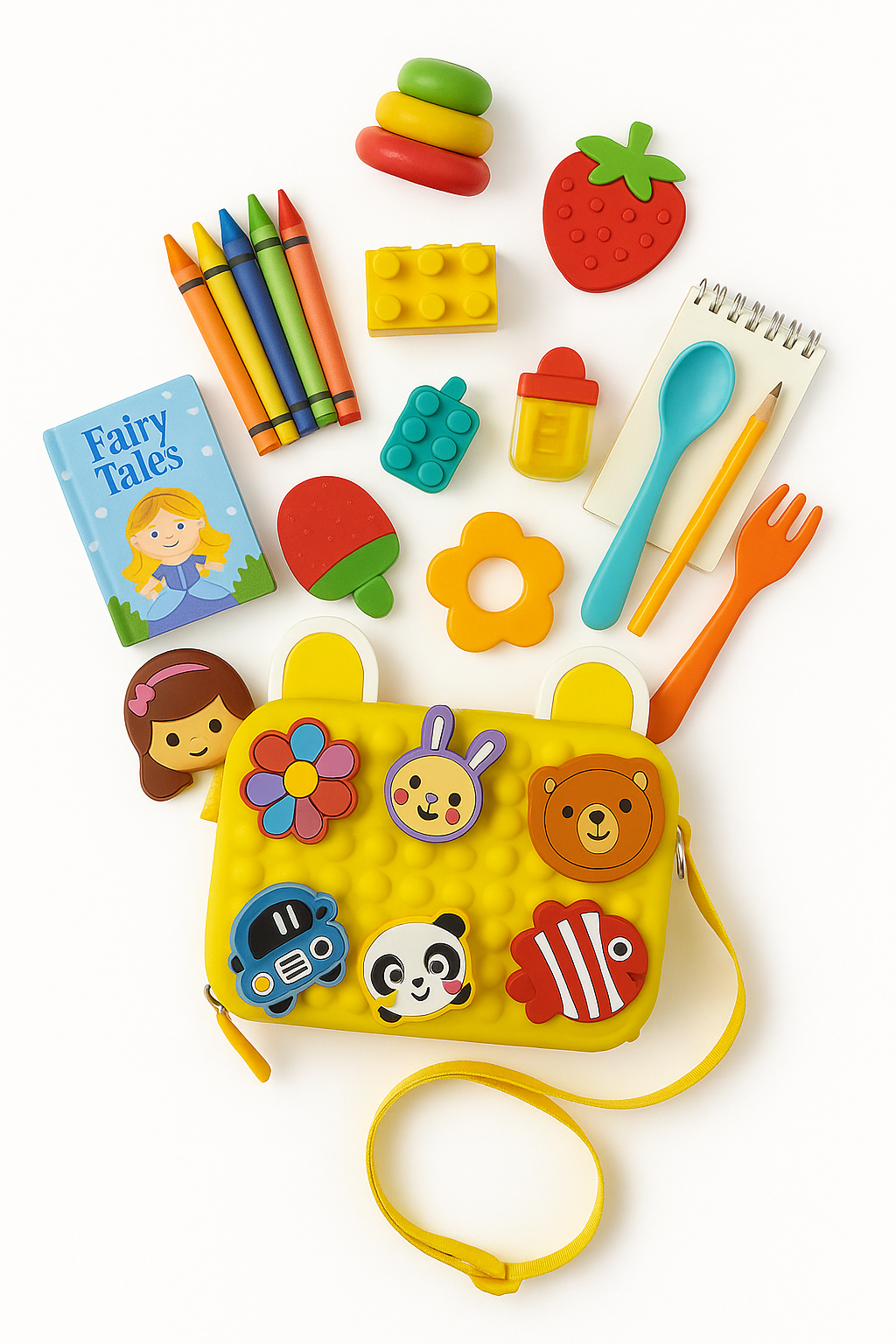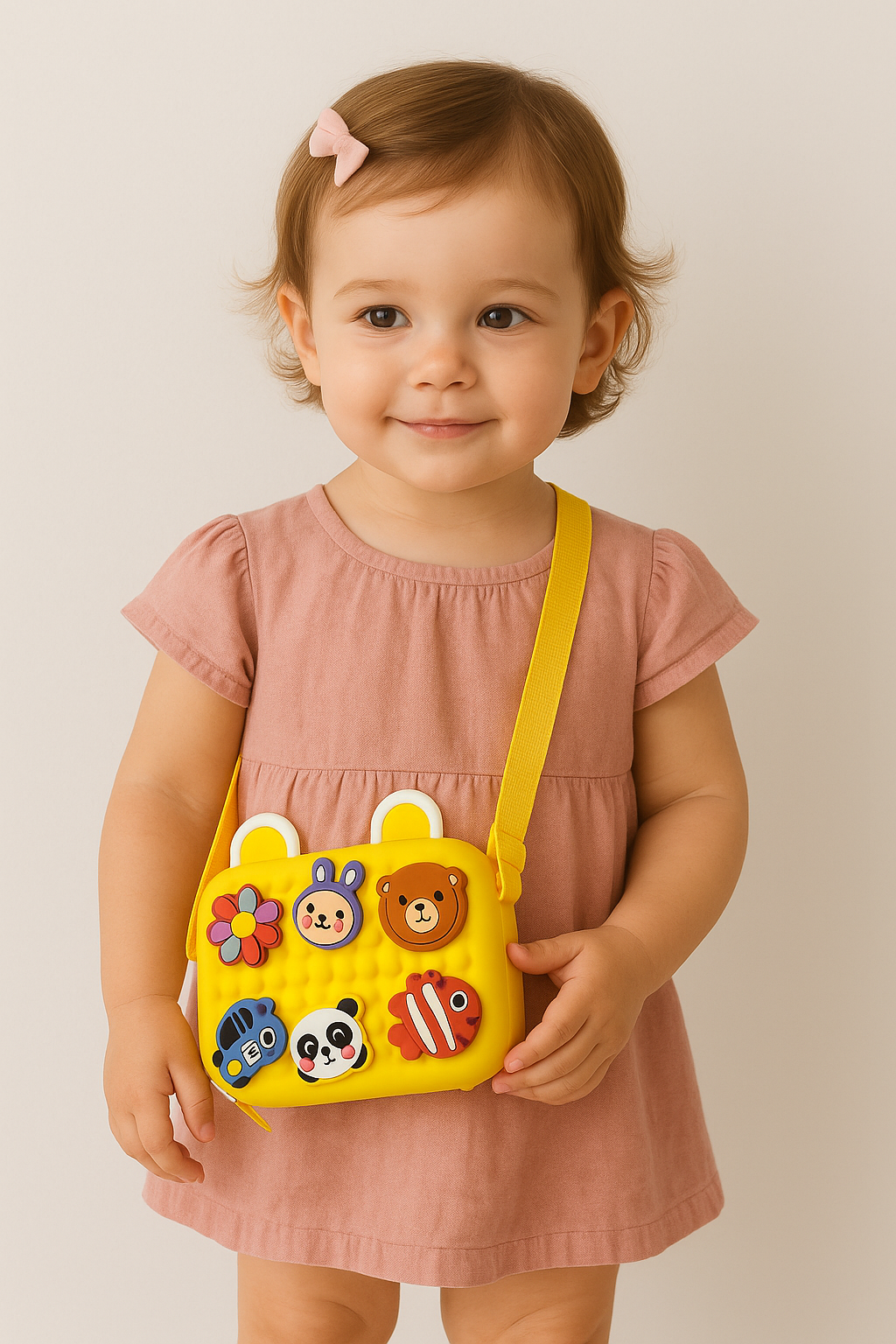Sling Bags for Kids: A Complete Description
Introduction
In today’s fast-paced, convenience-oriented world, accessories that combine functionality with fun have become essential for both adults and children. One such accessory that has grown in popularity among younger users is the sling bag for kids. Stylish, lightweight, and practical, sling bags offer a compact and comfortable way for children to carry their personal belongings—whether it’s for school, an outing, a playdate, or a trip. This description delves deep into the details of kids’ sling bags, exploring their features, benefits, usage, design elements, safety considerations, and growing cultural significance.
What Is a Sling Bag for Kids?
A sling bag is a type of bag that is typically worn across the chest or back using a single strap that loops over one shoulder. Unlike traditional backpacks that have two straps, sling bags are designed to be worn diagonally, providing easy access to contents without having to remove the bag. For kids, sling bags are scaled-down in size, designed with child-friendly aesthetics, and often include features that prioritize safety, comfort, and fun.
Design and Structure
Size and Shape
Kids’ sling bags are usually compact in size to suit the smaller frames of children aged between 3 to 12 years. Typical dimensions range from 20 to 30 centimeters in height and 15 to 25 centimeters in width. The shape can vary from rectangular and square to more playful forms like animal characters, cartoon figures, or geometric patterns.
Strap Design
The defining feature of a sling bag is its single adjustable strap, often padded for comfort. For kids, the strap is designed to be shorter and softer, accommodating their height and reducing pressure on the shoulder. Many models allow for the strap to be worn on either shoulder, providing flexibility for left- and right-handed children.
Material Composition
Sling bags for kids are made from a range of materials that balance durability, safety, and aesthetic appeal:
-
Nylon or Polyester: Lightweight, water-resistant, and durable, perfect for daily use.
-
Canvas or Cotton: Soft and eco-friendly materials, often used for artisanal or themed bags.
-
PU Leather or Faux Leather: Stylish and sleek, suitable for formal occasions.
-
Recycled Materials: Eco-conscious choices that appeal to sustainability-aware families.
Compartments and Storage
Most kids' sling bags are designed with multiple compartments to promote organization and practicality:
-
Main Compartment: Spacious enough to hold essential items like books, toys, snacks, or a water bottle.
-
Zippered Pockets: Additional pockets inside or outside for small items like keys, money, or stationery.
-
Mesh Pouches: Often found on the sides, suitable for carrying a drink bottle or umbrella.
-
Secret Pockets: Hidden compartments that add an element of fun and security for treasured items.
Functionality and Purpose
Everyday Use
Sling bags are ideal for carrying everyday items such as:
-
Small notebooks or activity books
-
Crayons, pencils, or coloring supplies
-
Snacks or lunchboxes
-
Mobile phones or handheld games (for older kids)
-
Personal hygiene items like tissues, sanitizer, or wipes
School and Study
While not large enough to replace a traditional school backpack, sling bags serve as supplemental bags for extracurricular classes, tutoring, or carrying lightweight study materials.
Outdoor Activities and Travel
On outings, field trips, or vacations, kids use sling bags to carry:
-
Travel games
-
Sunglasses and caps
-
A small camera or binoculars
-
Passport and travel documents (for older children under supervision)
Fashion and Self-Expression
One of the key appeals of sling bags is their ability to help children express their personality. With a wide range of styles, colors, and themes, these bags often become a statement piece in a child’s outfit. From Disney characters to superheroes, unicorns, dinosaurs, and space themes, there is a sling bag to match every interest.
Safety and Ergonomics
When it comes to kids, safety is always a top priority. Here are some features designed to ensure sling bags are safe and child-friendly:
Ergonomic Design
A well-designed sling bag prevents strain on a child's developing shoulders and spine. Padded and adjustable straps ensure an even weight distribution, and lightweight materials reduce the risk of muscle fatigue.
Secure Closures
High-quality zippers, Velcro, or magnetic snaps ensure the contents remain secure, preventing accidental spills or loss of items.
Reflective Strips
Many modern sling bags include reflective patches or strips, which are particularly useful for children walking to school in low-light conditions.
Non-Toxic Materials
Children often come into direct skin contact with their bags, so it’s essential that materials used are non-toxic, BPA-free, and tested for skin sensitivity.
Design Themes and Customization
Popular Themes
Themed sling bags capture the imagination of children and encourage regular use. Common themes include:
-
Cartoons: Disney, Nickelodeon, and other popular franchises.
-
Animals: Cats, pandas, dinosaurs, and more.
-
Adventure and Nature: Jungle, safari, outer space, underwater themes.
-
Fantasy: Fairies, dragons, wizards, and unicorns.
Customization
Some brands offer personalized sling bags where a child’s name, initials, or favorite quote can be embroidered or printed. This not only makes the bag unique but also helps in identifying it in case of loss.
Educational and Developmental Value
While at first glance a sling bag might seem purely utilitarian, it can contribute to a child’s personal development in subtle but important ways:
Responsibility and Organization
By managing the contents of their own bag, children learn to organize, prioritize, and take responsibility for their belongings.
Independence
Carrying a sling bag, especially during short trips or classes, promotes a sense of independence and autonomy, essential traits in early development.
Confidence and Identity
Choosing their own bag and carrying it gives children a sense of pride and helps in shaping their identity, particularly when the bag reflects their interests or personality.
Parental Considerations
When buying a sling bag for a child, parents often consider:
-
Weight: The bag itself should be lightweight before contents are added.
-
Washability: Kids’ items get dirty easily. Bags that are machine-washable or easy to clean are preferred.
-
Durability: Reinforced stitching, strong zippers, and quality materials ensure the bag lasts through regular wear and tear.
-
Affordability: A good sling bag balances quality with price, offering value for money.
Market Trends and Popular Brands
As the market for kids’ accessories grows, brands have responded with innovative features and appealing designs. Some leading names in kids' sling bags include:
-
Skip Hop
-
Wildkin
-
Pottery Barn Kids
-
Herschel
-
Smiggle
-
Disney Store
There’s also a rise in handcrafted and boutique brands, often found on platforms like Etsy, that provide eco-friendly and artisanal alternatives.
Tech Integration
Some newer models of kids’ sling bags come with features like:
-
Built-in GPS tags
-
USB charging ports (for older children)
-
RFID-blocking compartments (for digital safety)
Environmental and Ethical Considerations
In today’s climate-conscious society, there is an increasing demand for eco-friendly and ethically made products:
-
Recycled fabrics: Bags made from recycled PET bottles.
-
Organic cotton: Grown without harmful chemicals.
-
Fair trade production: Ensures that workers involved in manufacturing are paid fair wages.
Such considerations appeal to eco-conscious parents and set a positive example for children.
Sling Bag vs. Backpack for Kids
While both serve the purpose of carrying items, sling bags and backpacks differ in several key ways:
| Feature | Sling Bag | Backpack |
|---|---|---|
| Straps | One | Two |
| Comfort | More casual, less support | Better for heavier loads |
| Accessibility | Easy to swing around | Requires full removal |
| Style | Trendier, fashion-forward | Traditional, academic look |
| Use Case | Light travel, casual use | School, sports, heavier items |
Sling bags are often a complement to backpacks, not a replacement.
Conclusion
The sling bag for kids has evolved from a mere functional item to a multi-purpose accessory that combines style, comfort, education, and independence. Whether used for a quick outing, a playdate, a school trip, or a visit to grandma’s, a sling bag can be a child's trusted companion. With the wide variety of designs, safety features, and customizable options available today, parents can easily find a sling bag that matches their child’s needs and personality.
In a world where children are increasingly mobile, active, and expressive, the humble sling bag becomes more than just a container—it becomes a symbol of exploration, personality, and growth.
Would you like a shorter version of this text (e.g., for product packaging or listings), or should I create a visual version (infographic or product cat

